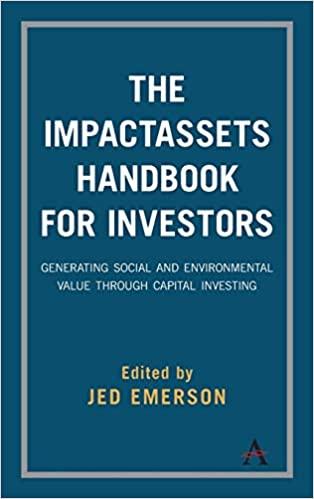Question
Suppose you are a health fitness consultant. Your clients come to you for advice ranging from diet and nutrition to exercise. One of your clients
Suppose you are a health fitness consultant. Your clients come to you for advice ranging from diet and nutrition to exercise. One of your clients is Dustin Winthrop. He is relatively healthy but has an underlying health condition that puts him in the vulnerable category for COVID-19. He is worried about going to the gym to workout. He wants you to help him evaluate two options:
Option A: Go back to the gym. He is currently paying $150 per month (taxes included) for a gym membership. He assumes that this price will likely remain the same for the next 10 years. If he goes back to the gym, he will make sure to observe social distancing, wear gloves and a face mask, and make sure each equipment that he uses is wiped down and sanitized.
Option B: Purchase Tonal. A home gym that costs $3,495. He also has to purchase equipment worth $495 and pay for installation (assume this is $500) and taxes (assume the sales tax is 9.5% and will be applied to the total cost). He also has to pay a $49 per month (taxes included) membership fee. He assumes this monthly membership fee will likely remain the same for the next 10 years. Dustin plans to stay on his workout regimen for the next six to ten years.
His opportunity cost, i.e., discount rate is between 5.5% - 7.75%. Your job is to make a recommendation about which option will be more cost effective.
Questions that must be addressed in the write-up:
1. For each capital budgeting decision criterion below, write a justification for that criterions suitability for this analysis. That is, use this step to figure out which of the following capital budgeting decision criteria you will use to make the recommendation.
a. NPV
b. IRR
c. MIRR
d. AAR
e. Payback period
2. For each method that you deem appropriate, calculate the outcome for each of the following scenarios:
a. If Dustin keeps working out for the next five years and the discount rate is 5.5%.
b. If Dustin keeps working out for the next five years and the discount rate is 7.75%. c. If Dustin keeps working out for the next ten years and the discount rate is 5.5%. d. If Dustin keeps working out for the next ten years and the discount rate is 7.75%.
3. Based on your results from step 2, make a recommendation for Dustin if
a. he keeps working out for the next five years
b. he keeps working out for the next ten years
Step by Step Solution
There are 3 Steps involved in it
Step: 1

Get Instant Access to Expert-Tailored Solutions
See step-by-step solutions with expert insights and AI powered tools for academic success
Step: 2

Step: 3

Ace Your Homework with AI
Get the answers you need in no time with our AI-driven, step-by-step assistance
Get Started


